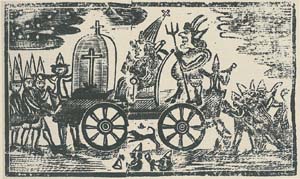 The Cartoon Network debuted its new Young Justice cartoon on Friday. This series takes place in a different universe from those of the 1998-2003 Young Justice comic book and all known Teen Titans groupings.
The Cartoon Network debuted its new Young Justice cartoon on Friday. This series takes place in a different universe from those of the 1998-2003 Young Justice comic book and all known Teen Titans groupings.
Instead, DC has told us, it’s set on Earth 16, which is much like the standard world of DC superheroes except that...there’s a Young Justice group we’ve never seen before.
The show mashes up elements of several versions of the DC superhero mythos: the TV Justice League plus Superfriends, the Superboy of the 1990s, the Kid Flash of the 1960s, and the Robin…
Well, this Robin is a mix of old and new. The producers assure us that he’s Dick Grayson, and he’s been working with Bruce Wayne for four years. But he’s only thirteen while Kid Flash is fifteen and Superboy is physiologically sixteen. The premiere emphasizes Robin’s computer-hacking skills, which in the comics are associated with Tim Drake. In sum, in this episode he appears to be this team’s nerdy little wise guy—a new role for a Robin.
Most interesting for group dynamics, as Laura Prudom at TV Squad reported:
In an interesting twist, 13-year-old Robin will not be leading the team as he has in previous incarnations; that honor will instead go to the older Aqualad, AKA Kaldur’ahm, an entirely new version of the character created specifically for the show.

We can tell Aqualad’s the leader just going by height, but he’s also the most emotionally mature of the guys. (The first episode shows us barely one of the two girls.)
Khari Payton, who voices Aqualad, also portrayed Cyborg on
Teen Titans, with a very different characterization. This extra-strength Aqualad has powers over electricity and water. Visually, he has brown skin and African features, combined with blond hair and webbed hands. I suspect the young
Young Justice audience will
respond better to a black leader than their elders.
The
Young Justice producers asked
Jesse McCartney, the singer-actor who voices Robin, to pitch his voice up so he sounds less mature. McCartney
told ET Online that the character is “a young, prepubescent superhero…who isn't ready to head a team like this yet.” But that “yet” hints at how Robin will grow.
Indeed, in a
USA Today interview McCartney stated that later in the season:
Robin is given the chance to really lead the team at certain times. You’ll see how he deals with that, when he’s faced with literally life-changing or –altering or –ending situations, how he deals with it. You can see how he’s still green — he’s still a kid and still trying to figure it out.
And in a
Comic Book Resources interview, McCartney went even further:
Robin also learns pretty early on that no else is going to be able to lead this team. And everyone does get a shot. Aqualad has a huge episode where he tries to take on this team and essentially can’t do it, and there’s a nice scene between him and Robin where you see Robin realize for the first time: “I’m not that kid anymore. I can’t just be this cocky, brash little kid that can’t step up.”
It’s striking that McCartney seems to be the only voice actor giving long interviews about this show. Of course, he’s the biggest star. But he’s also Robin.
The producers have warned fans that heroes can be killed in this universe. Zatara of the Justice League seems slated for death, and I suspect Red Tornado, Young Justice’s adult minder/mentor, could be dismantled. That would open up a new role for Robin. Still, starting from “cocky, brash little kid that can’t step up” is a big departure from the way DC has previously gathered its young superheroes.

In the original Teen Titans, and in the Young Justice of the 1990s, the Robin character came to the team the most experience, the best brains, and the biggest brand name. It made sense for him to be the teams’ leader. Indeed, the first team-up of Robin, Aqualad, and Kid Flash
back in 1964 revolved around discovering that the “guy without super-powers” was the biggest badass of the trio.
In the first issue of
Young Justice, scripter
Peter David had Red Tornado state Tim Drake’s role explicitly: he was the team’s superego.
Geoff Johns’s
Teen Titans magazine put off Tim’s ascendancy to leadership for a few years, but only because the team started with some twentysomethings from the
Marv Wolfman/
George Pérez New Teen Titans.
Comics writers have even played off the expectation that Robin must be in charge. When Jason Todd had a couple of outings with the Titans in the mid-1980s, Wolfman and Pérez highlighted the tension between his inexperience and his teammates’ habits. The latest issue of
Teen Titans shows Damian Wayne coming to Titans Tower and assuming he’ll be top dog. (Of course, he assumed that at Wayne Manor, too.)

Another element of this new
Young Justice show which we haven’t seen since a few odd stories about the original Titans scripted by
Bob Haney and
Bob Kanigher is
undercover work. The end of the TV premiere says
Batman will give them undercover assignments that the Justice League has become just too famous to deal with.
The early Titans and Young Justice both started mostly as a way for teens in the superhero biz to hang out with friends who understand, secondarily a way to tackle worldwide threats their size. Since one of this show’s ongoing themes will be figuring out how you stand alongside your mentor, we’ll see how that desire will intersect with the group’s assignments.
At last I have a matched set! Kind of.

















